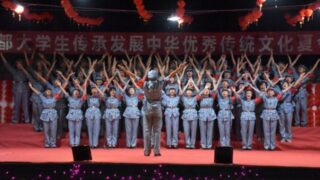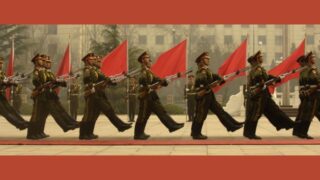A Cultural-Revolution-style statue vilifies a scholar who has mightily upset the Communist Party.
by Lei Shihong


Most Chinese know who Qin Hui was, and if some in the younger generations don’t, there is now the movie “Full River Red,” just released in theaters for the Lunar New Year.
In a nutshell, Qin Hui, who died in 1155, was the Grand Chancellor (similar to a Prime Minister) of Emperor Gaozong of the Song Dynasty. He governed ruthlessly by persecuting, exiling, and killing his political enemies. He betrayed the hero general Yue Fei, a national hero in Chinese history, and had him executed on trumped up charges.
For these reasons, the name Qin Hui is synonymous of treason in China. All regimes encouraged the ritual of beating effigies of Qin Hui. The practice still persists today, but had gone somewhat out of fashion until it was revived this year by the movie.


However, why should Chinese stop at Qin Hui? After all, the CCP constantly represents itself as surrounded by traitors. The image of a model statue went viral last week on social media of American scholar Miles Yu, kneeling in Cultural Revolution style with a sign on his neck stating that he is the modern Qin Hui and a traitor to his Chinese ancestors and his country of birth. Artist Hu Tianmo created the bronze statue, but this could not have been done and advertised in China without official authorization and support.
Yu, a distinguished American historian, was indeed born in 1962 in Anhui province, but moved to the United States as a college student, and had all his academic career there. The reason the CCP dislikes Yu, and even issued sanctions against him in December 2022 in retaliation to U.S. sanctions against Chinese officers guilty of human rights violations, is that he was a main adviser to former U.S. Secretary of State Mike Pompeo on Chinese issues. Yu is thus scapegoated as the “mastermind,” as the sign on the statue says, of the recent more assertive U.S. policy on China.
The statue incident shows that the CCP, rather than being ashamed of the Cultural Revolution, still uses its symbols. It is also a warning to foreign academics of Chinese origins who criticize the regime. Precisely because they study Chinese history, they understand that beating and burning effigies normally anticipates actual violence against those so vilified.









